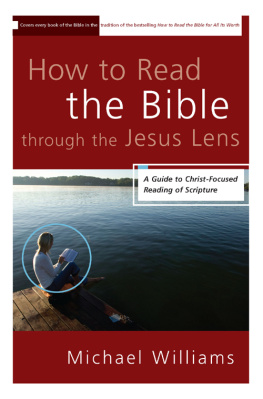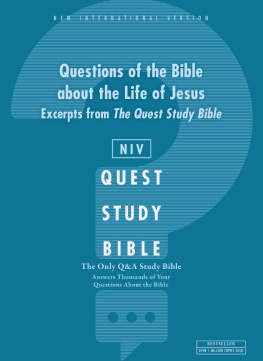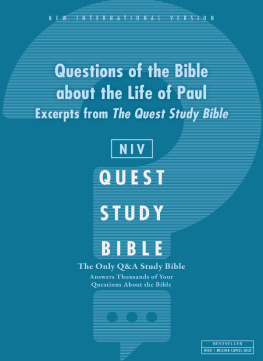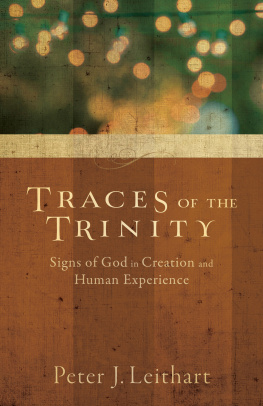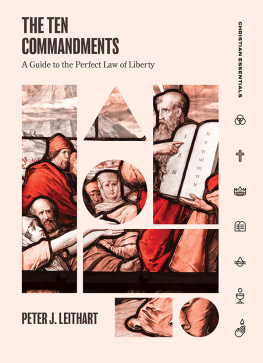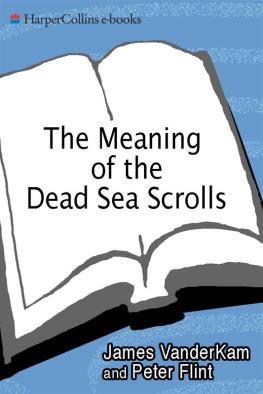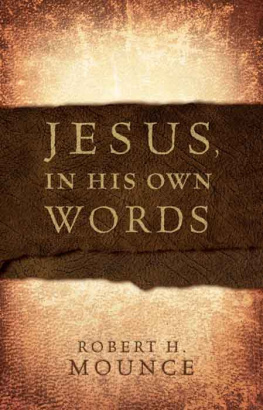
Deep ExegesisThe Mystery of Reading Scripture
Peter J. Leithart
BAYLOR UNIVERSITY PRESS
2009 by Baylor University Press
Waco, Texas 76798
All Rights Reserved. No part of this publication may be reproduced, stored in a retrieval system, or transmitted, in any form or by any means, electronic, mechanical, photocopying, recording or otherwise, without the prior permission in writing of Baylor University Press.
Cover Design by Cynthia Dunne, Blue Farm Graphic Design
Cover image 2009 iStockphoto.com
Oedipus the King by Sophocles, from Three Theban Plays by Sophocles, translated by Robert Fagles, 1982 by Robert Fagles. Used by permission of Viking Penguin, a division of Penguin Group (USA) Inc.
E-book ISBN: 978-1-60258-728-1
Library of Congress Cataloging-in-Publication Data
Leithart, Peter J.
Deep exegesis : the mystery of reading Scripture / Peter J. Leithart.
p. cm.
Includes bibliographical references and index.
1. Bible--Criticism, interpretation, etc. 2. Bible--Hermeneutics. I. Title.
BS511.3.L45 2009
220.6--dc22
2009010380
Printed in the United States of America on acid-free paper.
Contents
1 The Text Is a Husk
Modern Hermeneutics
2 Texts Are Events
Typology
3 Words Are Players
Semantics
4 The Text Is a Joke
Intertextuality
5 Texts Are Music
Structure
6 Texts Are about Christ
Application
Preface
Learning to Read from Jesus and Paul
I have two main aims in this book. First, this book advocates a hermeneutics of the letter. That is to say, reading Scripture has to do with attending to the specific contours of the textthe authors word choices, structural organization, tropes and allusions, and intertextual quotations.
That might seem a prescription for minimalism, if not boredom or even murder. The letter kills, after all, while the Spirit gives life. Dont we want our hermeneutics to raise us rather than kill us?
I disagree with the premise of this critique. We get at the meaning of baptism not by ignoring the properties of water but by musing on those properties. Eucharistic theology properly emerges from considering the meanings of meals, of bread and of wine, of broken loaves and full cups. So, too, we get to the rich and richly varied sensus plenior of the sacramental word not by moving past the letter to a spiritual sense, not by treating the letter as a husk for removal. We get at the riches of Scripture precisely by luxuriating in the letter, by squeezing everything we can from the text as written.
My first aim is to show that a hermeneutics of the letter ought not to be a rigidly literalist hermeneutics.
My second aim is to learn to read from Jesus and Paul. Almost without exception, most of the questions I attempt to answer in this book arose from my efforts to make sense of how the Bible works, and particularly how Jesus, Paul, and the other New Testament writers read the Old Testament. In some chapters, my argument does not overtly take this shape. Even when I am beginning from a theory of textual temporality (chapter 2) or considering analogies between textual and musical structure (chapter 5), however, my goal is to describe and defend the ways biblical writers themselves read the Bible. I want to read the Old Testament and the New as a disciple of Jesus, and that means following in the footsteps of the disciples methods of reading.
I am not satisfied with learning to read only the Bible from Jesus and Paul. As a disciple of Jesus, I want to follow his lead whenever I pick up a text, whether it be the Song of Songs or Song of Myself . I begin from the assumption that the apostles are not employing some bizarre form of sacred hermeneutics when they find Christology and ecclesiology around every corner of the Old Testament. They are giving us pointers to the nature of reading itself: clues to the meaning of meaning, the functions of language, and the proper modes of interpretation. To make this point concrete, every chapter includes readings of both biblical and extrabiblical texts.
Throughout the book I return to John 9, the story of Jesus healing of the man born blind. This chapter is one of the literary masterpieces of the Bible, and therefore superbly embodies many of the points I want to make about texts and reading. Though the chapter functions as an illustration, it is more than that. My aim has not been to develop a theory or method and then apply it to John 9. On the contrary, the theory has more or less emerged from reflecting on the way the texts are put together, and on what I actually do when I set about to read them.
John 9 is also more than an illustration because I want the text to work on the reader as much as the reader works on the text. I aim for the text to do what Jesus did for the blind manto make new by opening eyes.
One
The Text Is a Husk
Modern Hermeneutics
Picking through the rubble of postwar Poland to find something worth keeping, Nobel laureate poet Czeslaw Milosz came upon the Bible. Though he could not believe the Bible was literally true, he concluded that it was the common good of both believers and unbelievers. For intellectuals in the West, the Bible has provided a standard of authenticity against the pervasive falsehoods of advertising, social engineering, moral uplift, demagogic politicsall the verbal corruptions of democracy, the language of illusion. For Milosz, the scriptures provided a standard of authenticity against a much more dangerous language, the language of legalized murder.
In his brilliant collection of essays, Cultural Amnesia , Clive James reflects on Milosz remark and wonders if the Bibles importance can only become clear when civilization is collapsing. In our more comfortable surroundings, we fool ourselves into thinking that the eternal can become outdated, and safely forgotten. Forgetfulness, James argues, is not confined to unbelievers. He chides Christians for the ease with which we have let the Bible go. Though himself a lapsed believer, James laments the successful reduction of once-vital language to the compendium of banalities of modern English translations.
Throughout the history of the West, the Bible has been much more than a standard of authenticity. It has been a civilization-building book as well as a critical tool. During the medieval period, copyists, monks, and later university professors devoted their intellectual energies to preserving and penetrating the biblical text. Pope Gelasius I set one of the cornerstones of Western political lifehis two swords theory of church and statein a typological meditation on Melchizedek, the priest-king of Salem, and Alfred the Great was not the only medieval ruler to knit the Ten Commandments into the laws of nations. Music was composed to carry the lyrics of the Psalms, and poets and prose writers drew on the riches of biblical poetry.
Despite their abandonment of medieval modes of reading, the Reformers continued to revel in the beauties and unlock the power of the text. Scripture inspired a rich literary culture within early Protestantism, perhaps nowhere more evident than in Elizabethan and early Jacobean England. Anglican theologians and pastors developed a biblically based genre criticism that was employed by religious poets who were among the major poets of the time (e.g., George Herbert and John Donne). Because Protestants gave attention to the letter of the Bible, they regarded the particular verbal formulations and figures as the precisely appropriate vehicles for conveying truth, whether of natural things or of God. While insisting that the Scriptures have a single sense, Protestant interpreters, poets, and writers recognized that a variety of applications could arise from a single sense, and the Bibles multifaceted symbols enriched the imaginative stock of religious and even secular poetry.
Next page

